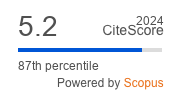Article | Open Access
Offshore Embeddedness Beyond the Wall: Chinese Cloud Providers in Southeast Asia’s Data Governance Landscape
| Views: | 2570 | | | Downloads: | 1735 |
Abstract: Why do middle power states permit companies from institutionally controversial jurisdictions to build and run critical cloud infrastructure on their soil, despite pronounced data governance concerns? How do such firms convert deep suspicion into durable market legitimacy amid intensifying geopolitical competition? Drawing on case studies of Alibaba Cloud and Tencent Cloud across five ASEAN countries (2015–2024), this article proposes the concept of offshore embeddedness: a legitimacy strategy that combines demonstrable separation from home-state control with deep integration into host-state governance structures. Three mechanisms underpin this strategy: regulatory-infrastructure convergence through exhaustive certification and sovereign cloud builds, network integration via stakeholder coalitions that fuse firm survival to domestic political interests, and organizational decoupling accomplished through verifiable legal separation from home-country governance. ASEAN governments shape these outcomes by acting as gatekeeper-regulators (imposing localization and audit preconditions), infrastructure brokers (exchanging market access for domestic data center investment and skills transfer), and coalition orchestrators (embedding foreign clouds within host-led political-economic networks). Through these roles, domestic data governance frameworks shift from exclusionary shields to leverage tools, recalibrating digital governance and binary US–China narratives.
Keywords: ASEAN; Chinese cloud providers; data governance; offshore embeddedness; US–China technological competition
Supplementary Files:
Published:
© Binyi Yang, Mingjiang Li. This is an open access article distributed under the terms of the Creative Commons Attribution 4.0 license (http://creativecommons.org/licenses/by/4.0), which permits any use, distribution, and reproduction of the work without further permission provided the original author(s) and source are credited.


